Themed collection Celebrating our 2021 Prizewinners

Correlated disorder in metal–organic frameworks
Metal–organic frameworks host many types of compositional and structural disorder. In this Highlight article we explore cases where this disorder is correlated, rather than random.

CrystEngComm, 2021,23, 2915-2922
https://doi.org/10.1039/D1CE00210D
Gold nanomaterials functionalised with gadolinium chelates and their application in multimodal imaging and therapy
An overview of recent progress in the design of gadolinium-functionalised gold nanoparticles for use in MRI, multimodal imaging and theranostics.
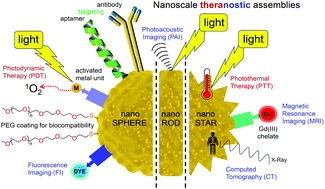
Chem. Commun., 2020,56, 4037-4046
https://doi.org/10.1039/D0CC00196A
21st century developments in the understanding and control of molecular solids
This highlight article surveys some of the key recent advances in crystallization techniques, polymorphism, co-crystals, amorphous materials and crystal engineering.
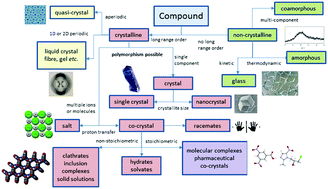
Chem. Commun., 2018,54, 13175-13182
https://doi.org/10.1039/C8CC08277D
17O NMR spectroscopy of crystalline microporous materials
Cost-effective and atom-efficient isotopic enrichment enables 17O NMR spectroscopy of microporous materials to be used to probe local structure and disorder and to explore chemical reactivity.

Chem. Sci., 2021,12, 5016-5036
https://doi.org/10.1039/D1SC00552A
Cold and controlled chemical reaction dynamics
State-to-state chemical reaction dynamics, with complete control over the reaction parameters, offers unparalleled insight into fundamental reactivity.

Phys. Chem. Chem. Phys., 2020,22, 9180-9194
https://doi.org/10.1039/D0CP00931H
Photoinduced C–H bond fission in prototypical organic molecules and radicals
We survey and assess current knowledge regarding the primary photochemistry of hydrocarbon molecules and radicals.
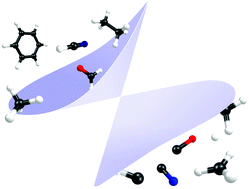
Phys. Chem. Chem. Phys., 2019,21, 13880-13901
https://doi.org/10.1039/C8CP07454B
Recent advances in the use of stimulated Raman scattering in histopathology
Stimulated Raman histopathology with computer aided diagnosis.
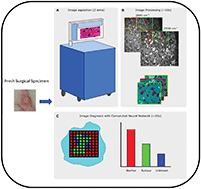
Analyst, 2021,146, 789-802
https://doi.org/10.1039/D0AN01972K
Covalent organic framework photocatalysts: structures and applications
This review summarises the recent advances of covalent organic framework photocatalysts including structures and applications.
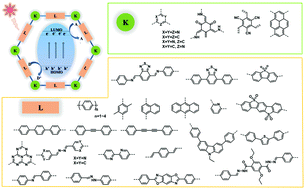
Chem. Soc. Rev., 2020,49, 4135-4165
https://doi.org/10.1039/D0CS00278J
Conjugated polymers for visible-light-driven photocatalysis
This review summarizes the recent advancements in π-conjugated polymers for various photocatalytic applications under visible light.
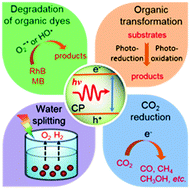
Energy Environ. Sci., 2020,13, 24-52
https://doi.org/10.1039/C9EE01935A
Carbon capture and storage (CCS): the way forward
Carbon capture and storage (CCS) is vital to climate change mitigation, and has application across the economy, in addition to facilitating atmospheric carbon dioxide removal resulting in emissions offsets and net negative emissions. This contribution reviews the state-of-the-art and identifies key challenges which must be overcome in order to pave the way for its large-scale deployment.

Energy Environ. Sci., 2018,11, 1062-1176
https://doi.org/10.1039/C7EE02342A
Radicals derived from Lewis acid/base pairs
While conventional approaches to stabilizing main group radicals have involved the use of Lewis acids or bases, this tutorial review focuses on new avenues to main group radicals derived from combinations of donor and acceptor molecules.
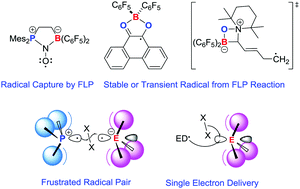
Chem. Soc. Rev., 2019,48, 3454-3463
https://doi.org/10.1039/C8CS00940F
Lower limits for non-radiative recombination loss in organic donor/acceptor complexes
An emissive yet charge-generating organic donor/acceptor blend is demonstrated, which highlights the importance of electronic hybridization between the charge-transfer and local-exciton states to reduce non-radiative recombination loss.

Mater. Horiz., 2022,9, 325-333
https://doi.org/10.1039/D1MH00529D
Negative X-ray expansion in cadmium cyanide
X-ray radiation induced unit-cell contraction and phase transition selection in the negative thermal expansion material cadmium cyanide.
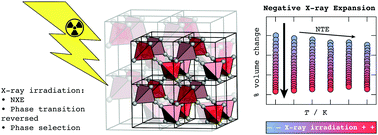
Mater. Horiz., 2021,8, 1446-1453
https://doi.org/10.1039/D0MH01989E
From a P4 butterfly scaffold to cyclo- and catena-P4 units
The coordination behavior of the P4 butterfly complex toward various d6-based half-sandwich complexes is investigated, with the P4 unit being selectively activated.

Chem. Commun., 2021,57, 2257-2260
https://doi.org/10.1039/D0CC08328C
Mass spectrometry reveals potential of β-lactams as SARS-CoV-2 Mpro inhibitors
A high-throughput mass spectrometry based Mpro assay identifies penicillin esters as new SARS-CoV-2 Mpro inhibitors.
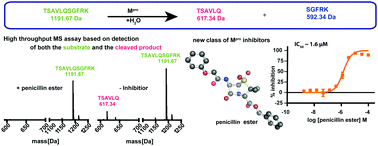
Chem. Commun., 2021,57, 1430-1433
https://doi.org/10.1039/D0CC06870E
Discrete and polymeric organometallic-organic assemblies based on the diarsene complex [(Cp)2Mo2(CO)4(μ,η2-As2)], AgPF6 and N-donor organic molecules
The first mixed-ligand self-assembly reactions of the diarsene complex [Cp2Mo2(CO)4(μ,η2-As2)] and N-donor organic molecules in the presence of AgPF6 allow for the synthesis of two discrete and four polymeric supramolecular aggregates.
![Graphical abstract: Discrete and polymeric organometallic-organic assemblies based on the diarsene complex [(Cp)2Mo2(CO)4(μ,η2-As2)], AgPF6 and N-donor organic molecules](/en/Image/Get?imageInfo.ImageType=GA&imageInfo.ImageIdentifier.ManuscriptID=D0NJ05959E&imageInfo.ImageIdentifier.Year=2021)
New J. Chem., 2021,45, 1800-1804
https://doi.org/10.1039/D0NJ05959E
Insights into D4h@metal-symmetry single-molecule magnetism: the case of a dysprosium-bis(boryloxide) complex
We report a D4h@Dy single-molecule magnet (SMM) with a Ueff energy barrier of 1565 K, one of the highest energy barriers for any 6-coordinate lanthanide SMM.
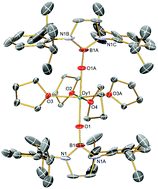
Chem. Commun., 2021,57, 733-736
https://doi.org/10.1039/D0CC07446B
Nanozeolite ZSM-5 electrolyte additive for long life sodium-ion batteries
Hard-carbon electrolyte interface stabilisation with a nano-zeolite ZSM-5 electrolyte additive. Unwanted degradation products are trapped within the zeolite cage preventing compositional changes at the interface, maximising the life-time of a sodium-ion battery.

Chem. Commun., 2020,56, 11609-11612
https://doi.org/10.1039/D0CC03976D
T m filtering by 1H-methyl labeling in a deuterated protein for pulsed double electron–electron resonance EPR
Methyl protonation in a deuterated protein background is used to assign DEER-derived multimodal distance distributions by phase-memory relaxation time filtering.
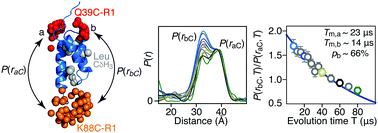
Chem. Commun., 2020,56, 10890-10893
https://doi.org/10.1039/D0CC04369A
A recyclable metal–organic framework for ammonia vapour adsorption
The incorporation of sterically hindered boron centers into MOFs allows the recyclable adsorption of NH3 vapour from aqueous solution.
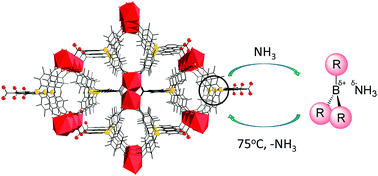
Chem. Commun., 2020,56, 9600-9603
https://doi.org/10.1039/D0CC00741B
Aerobically-initiated C(sp3)–H bond amination through the use of activated azodicarboxylates
In this article we report a procedure for α-C(sp3)–H amination of ethereal compounds through use of azodicarboxylates as the nitrogen source and freely-available atmospheric oxygen to access ethereal radical intermediates via aerobic C–H activation.
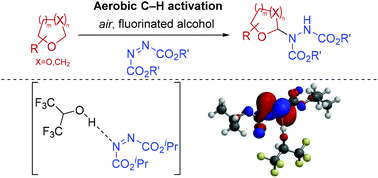
Org. Biomol. Chem., 2020,18, 6258-6264
https://doi.org/10.1039/D0OB01562H
Transition-metal-carbene-like intermolecular insertion of a borylene into C–H bonds
In analogy to transition-metal carbene chemistry, [(OC)5Mo![[double bond, length as m-dash]](https://www.rsc.org/images/entities/char_e001.gif) BN(SiMe3)2] acts as a source of a borylene fragment for selective intermolecular insertion into C–H bonds under very mild conditions.
BN(SiMe3)2] acts as a source of a borylene fragment for selective intermolecular insertion into C–H bonds under very mild conditions.

Chem. Commun., 2020,56, 7277-7280
https://doi.org/10.1039/D0CC03075A
Pseudo-enantiomeric carbohydrate-based N-heterocyclic carbenes as promising chiral ligands for enantiotopic discrimination
The practical synthesis of pseudo-enantiomeric carbohydrate-based NHC–Rh complexes bearing C1 or C3 sterically differentiated positions is reported. We show that steric bulk at either C1 or C3 leads to enantiotopic discrimination in the hydrosilylation of acetophenone.
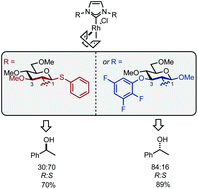
Org. Biomol. Chem., 2020,18, 3012-3016
https://doi.org/10.1039/D0OB00155D
One-step in vivo metabolic labeling as a theranostic approach for overcoming drug-resistant bacterial infections
A bacterial metabolic probe with AIE characteristics shows great potential in in vivo light-up imaging of bacteria and antibacterial therapy.
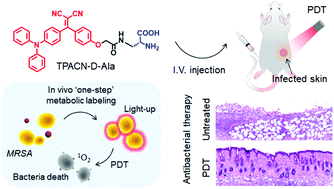
Mater. Horiz., 2020,7, 1138-1143
https://doi.org/10.1039/C9MH01675A
Resonant doping for high mobility transparent conductors: the case of Mo-doped In2O3
Superior transparent conducting properties of indium oxide realised by molybdenum donors resonant in the conduction band, avoiding detrimental effects of tin doping.
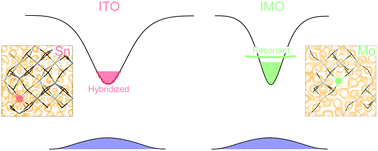
Mater. Horiz., 2020,7, 236-243
https://doi.org/10.1039/C9MH01014A
Triphenylamine based conjugated microporous polymers for selective photoreduction of CO2 to CO under visible light
Two novel triphenylamine based conjugated microporous polymers are designed and synthesized for photocatalytic CO2 reduction using water vapor as electron donor under ambient condition (>420 nm).
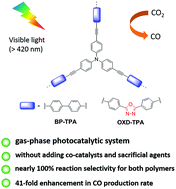
Green Chem., 2019,21, 6606-6610
https://doi.org/10.1039/C9GC03131F
On the stability of a dipole-bound state in the presence of a molecule
A dipole-bound state is found to survive despite its disruption by an alkyl chain.
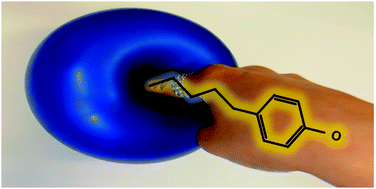
Phys. Chem. Chem. Phys., 2019,21, 24286-24290
https://doi.org/10.1039/C9CP04942H
Design and synthesis of two-dimensional covalent organic frameworks with four-arm cores: prediction of remarkable ambipolar charge-transport properties
Theoretical and experimental investigations of diacetylene-linked COFs with remarkable charge-transport properties.
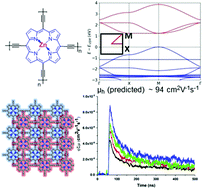
Mater. Horiz., 2019,6, 1868-1876
https://doi.org/10.1039/C9MH00035F
Disease-specific protein corona sensor arrays may have disease detection capacity
Protein corona sensor array technology identifies diseases through specific proteomics pattern recognition.
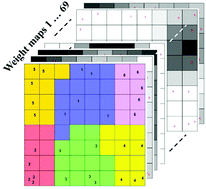
Nanoscale Horiz., 2019,4, 1063-1076
https://doi.org/10.1039/C9NH00097F
Enantioselective reduction of N-alkyl ketimines with frustrated Lewis pair catalysis using chiral borenium ions
Effective enantioselective reduction of ketimines has been demonstrated by ‘frustrated’ Lewis pair catalysis using an IBiox-stabilised borenium cation.
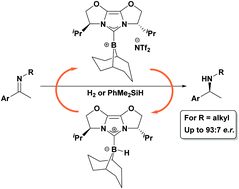
Chem. Commun., 2019,55, 7077-7080
https://doi.org/10.1039/C9CC02900A
Delineating the critical role of acid additives in Mn-catalysed C–H bond functionalisation processes
Acids play positive and negative roles in Mn-catalysed C–H funtionalisation reactions, from substrate sensitivity to catalyst longevity.

Chem. Commun., 2019,55, 3211-3214
https://doi.org/10.1039/C9CC00257J
Easy and versatile coating approach for long-living white hybrid light-emitting diodes
Herein, we provide a new easy-to-do protocol for preparing luminescent rubber-like materials based on a wide palette of compounds, such as small-molecules, quantum dots, polymers, and coordination complexes.

Mater. Horiz., 2016,3, 340-347
https://doi.org/10.1039/C6MH00038J
Semisynthetic ‘designer’ p53 sheds light on a phosphorylation–acetylation relay
‘Designer’ p53: semi-synthesis of the tumor suppressor protein p53 via native chemical ligation enables in vitro structure–activity studies to reveal how this master regulator of cell fate is itself regulated by phosphorylation.
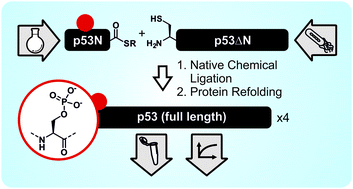
Chem. Sci., 2021,12, 8563-8570
https://doi.org/10.1039/D1SC00396H
CrystalGrower: a generic computer program for Monte Carlo modelling of crystal growth
Generic in silico methodology – CrystalGrower – for simulating crystal habit and nanoscopic surface topology to determine crystallisation free energies.
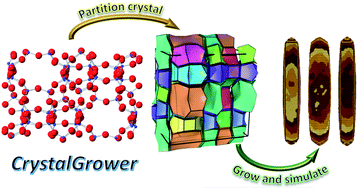
Chem. Sci., 2021,12, 1126-1146
https://doi.org/10.1039/D0SC05017B
Introducing affinity and selectivity into galectin-targeting nanoparticles with fluorinated glycan ligands
A chemo-enzymatic site-specific fluorination strategy is employed to obtain glyco-nanoparticles with tuneable selectivity towards galectins.
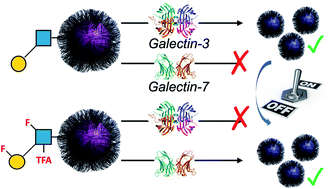
Chem. Sci., 2021,12, 905-910
https://doi.org/10.1039/D0SC05360K
One-pot thiol–amine bioconjugation to maleimides: simultaneous stabilisation and dual functionalisation
An alternative approach to maleimide conjugate stabilisation is presented, by the consecutive addition of a thiol and an amine to dibromomaleimides. The amine serves to simultaneously deactivate the maleimide and enable dual functionalisation.
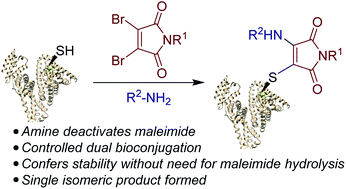
Chem. Sci., 2020,11, 11455-11460
https://doi.org/10.1039/D0SC05128D
Coligand role in the NHC nickel catalyzed C–F bond activation: investigations on the insertion of bis(NHC) nickel into the C–F bond of hexafluorobenzene
A combined experimental and theoretical study on the mechanism of the C–F bond activation of C6F6 with [Ni(NHC)2] is provided.
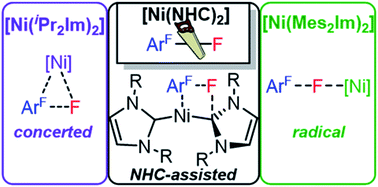
Chem. Sci., 2020,11, 11009-11023
https://doi.org/10.1039/D0SC04237D
Synthesis and structures of anionic rhenium polyhydride complexes of boron–hydride ligands and their application in catalysis
Exhaustive deoxygenation of perrhenate by pinacol borane forms a new Re anion of boron and hydride ligands only that undergoes borane ligand exchange, stoichiometric C–H boration, and catalytic pyridine hydroboration.
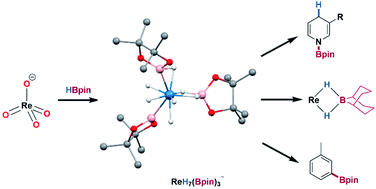
Chem. Sci., 2020,11, 9994-9999
https://doi.org/10.1039/D0SC03458D
Structure–activity relationships in well-defined conjugated oligomer photocatalysts for hydrogen production from water
Oligomer chain length and backbone twisting were found to have a strong effect on optoelectronic properties but a trimer of dibenzo[b,d]thiophene sulfone was found to have high photocatalytic activity approaching that of its polymer analogue.
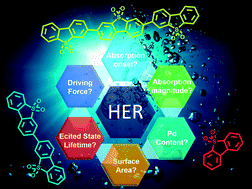
Chem. Sci., 2020,11, 8744-8756
https://doi.org/10.1039/D0SC02675A
Photochemical generation of acyl and carbamoyl radicals using a nucleophilic organic catalyst: applications and mechanism thereof
An organic catalyst uses low-energy photons to generate acyl and carbamoyl radicals upon activation of the corresponding chlorides via a nucleophilic acyl substitution path. The synthetic potential and the mechanism of this strategy are discussed.
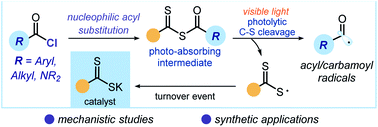
Chem. Sci., 2020,11, 6312-6324
https://doi.org/10.1039/D0SC02313B
Investigation of cellular uptake mechanism of functionalised gold nanoparticles into breast cancer using SERS
Use of sensitive, non-destructive and straightforward 3D SERS for investigating the cellular uptake processes of functionalised nanotags in entire cell volume.

Chem. Sci., 2020,11, 5819-5829
https://doi.org/10.1039/D0SC01255F
Rationalizing the diverse reactivity of [1.1.1]propellane through σ–π-delocalization
A unified framework that explains the reactivity of [1.1.1]propellane through electron delocalization.
![Graphical abstract: Rationalizing the diverse reactivity of [1.1.1]propellane through σ–π-delocalization](/en/Image/Get?imageInfo.ImageType=GA&imageInfo.ImageIdentifier.ManuscriptID=D0SC01386B&imageInfo.ImageIdentifier.Year=2020)
Chem. Sci., 2020,11, 4895-4903
https://doi.org/10.1039/D0SC01386B
Transient cavity dynamics and divergence from the Stokes–Einstein equation in organic aerosol
The failure of the Stokes–Einstein relation is assessed in aerosol measurements and molecular dynamics simulations.
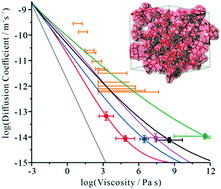
Chem. Sci., 2020,11, 2999-3006
https://doi.org/10.1039/C9SC06228A
Post-synthetic modulation of the charge distribution in a metal–organic framework for optimal binding of carbon dioxide and sulfur dioxide
Modulation of pore environment is an effective strategy to optimize guest binding in porous materials.
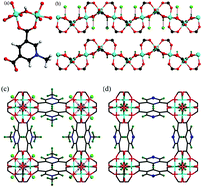
Chem. Sci., 2019,10, 1472-1482
https://doi.org/10.1039/C8SC01959B
A computationally designed binding mode flip leads to a novel class of potent tri-vector cyclophilin inhibitors
Molecular simulations led to the discovery of a new class of small molecules that inhibit the cyclophilin family of proteins.
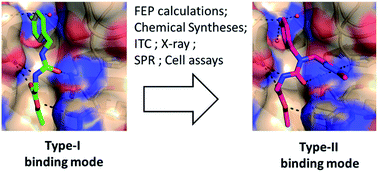
Chem. Sci., 2019,10, 542-547
https://doi.org/10.1039/C8SC03831G
Determination of excited state molecular structures from time-resolved gas-phase X-ray scattering
We present a comprehensive investigation of a recently introduced method to determine transient structures of molecules in excited electronic states with sub-ångstrom resolution from time-resolved gas-phase scattering signals.
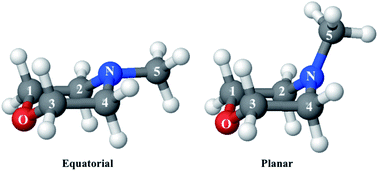
Faraday Discuss., 2021,228, 104-122
https://doi.org/10.1039/D0FD00118J
Perturbation of gut microbiota plays an important role in micro/nanoplastics-induced gut barrier dysfunction
Exposure to micro/nanoplastics (M/NPLs) deteriorates the intestinal barrier by disturbing the bacterial composition in the gut.
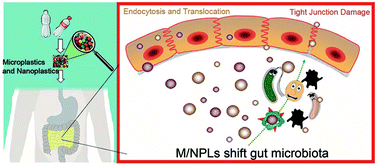
Nanoscale, 2021,13, 8806-8816
https://doi.org/10.1039/D1NR00038A
Autodetachment dynamics of 2-naphthoxide and implications for astrophysical anion abundance
The first above-threshold resonance of 2-naphthoxide decays through vibrational mode specific autodetachment with a lifetime of 130 ± 10 fs. This state is not a doorway to stable interstellar anion formation.
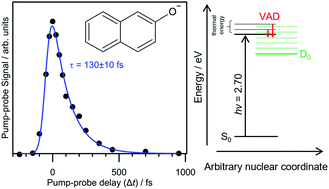
Phys. Chem. Chem. Phys., 2021,23, 5817-5823
https://doi.org/10.1039/D1CP00261A
Ortho-vanillin derived Al(III) and Co(III) catalyst systems for switchable catalysis using ε-decalactone, phthalic anhydride and cyclohexene oxide
Switchable catalysis is a useful one-pot method to prepare block polyesters utilising a single catalyst exposed to a mixture of monomers.
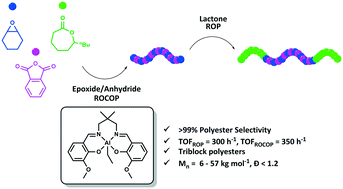
Catal. Sci. Technol., 2021,11, 1737-1745
https://doi.org/10.1039/D0CY02164D
From sugars to FDCA: a techno-economic assessment using a design concept based on solvent selection and carbon dioxide emissions
Process simulations allow the evaluation of the emissions and selling price for the production of the key monomer FDCA based on different feedstocks and solvent systems, alongside considerations of safety and current process development.
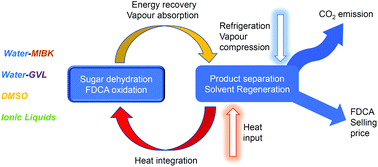
Green Chem., 2021,23, 1716-1733
https://doi.org/10.1039/D0GC03991H
Intermetallic transfer of unsymmetrical borylene fragments: isolation of the second early-transition-metal terminal borylene complex and other rare species
We report the synthesis of group 6 borylene complexes by the salt elimination method and study their borylene transfer capability to other transition metal fragments, providing new borylene complexes that are inaccessible by other routes.

Dalton Trans., 2020,49, 17719-17724
https://doi.org/10.1039/D0DT03557B
High elasticity, chemically recyclable, thermoplastics from bio-based monomers: carbon dioxide, limonene oxide and ε-decalactone
Efficient polymerization catalyses transform bio-sourced monomers into thermoplastics with high elasticity and strength, which can be degraded to allow for chemical recycling. The plastics utilize carbon dioxide, limonene oxide and ε-decalactone.
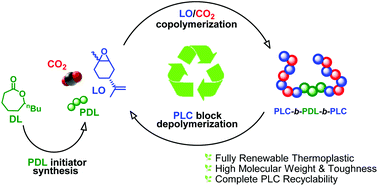
Green Chem., 2020,22, 8298-8307
https://doi.org/10.1039/D0GC02295K
Multi-state pair-density functional theory
Multi-state Pair-Density Functional Theory (MS-PDFT) gives the correct topology of interacting potential energy surfaces where state-specific calculations fail.
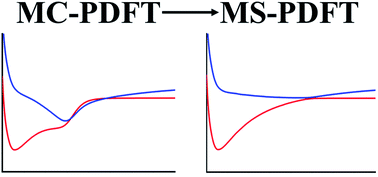
Faraday Discuss., 2020,224, 348-372
https://doi.org/10.1039/D0FD00037J
Sb 5s2 lone pairs and band alignment of Sb2Se3: a photoemission and density functional theory study
Lone pair Sb 5s orbitals are identified at the valence band maximum of Sb2Se3 bulk crystals using photoemission and density functional theory. The resulting band alignments are determined and implications for solar cell applications are discussed.
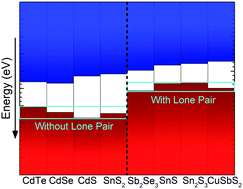
J. Mater. Chem. C, 2020,8, 12615-12622
https://doi.org/10.1039/D0TC03470C
Dynamic pH measurements of intracellular pathways using nano-plasmonic assemblies
Functionalized plasmonic Ag nano-assemblies moving in a living cell were employed to visualize the spatiotemporal change of intracellular pH by surface-enhanced Raman scattering.

Analyst, 2020,145, 5768-5775
https://doi.org/10.1039/D0AN00986E
Hybrid GMP–polyamine hydrogels as new biocompatible materials for drug encapsulation
Pyrazole-based polyamines stabilise G-quartet based GMP hydrogels at human skin pH and GMP concentrations one order of magnitude lower than typically employed, allowing in some cases drug encapsulation without disrupting the hydrogel structure.
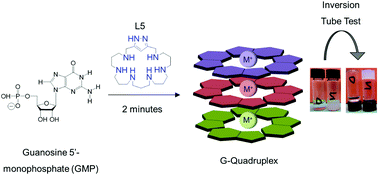
Soft Matter, 2020,16, 6514-6522
https://doi.org/10.1039/D0SM00704H
Determination and characterisation of the surface charge properties of the bacteriophage M13 to assist bio-nanoengineering
Characterisation of the external surface of bacteriophage M13 using PVIII protein structural data and measuring ζ-potential of the entire virus.

RSC Adv., 2020,10, 25385-25392
https://doi.org/10.1039/D0RA04086J
Side-chain tuning in conjugated polymer photocatalysts for improved hydrogen production from water
Structure–property–activity relationships in solution processable polymer photocatalysts for hydrogen production from water were probed by varying the chemical structure of both the polymer side-chains and the polymer backbone.
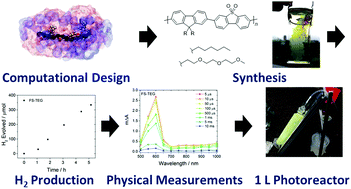
Energy Environ. Sci., 2020,13, 1843-1855
https://doi.org/10.1039/D0EE01213K
Ru and RuOx decorated carbon nitride for efficient ammonia photosynthesis
A ternary heterostructure Ru/RuO2/g-C3N4 was designed for ammonia photosynthesis under visible light irradiation, which exhibited 6 times higher activity with excellent stability than the pristine g-C3N4.
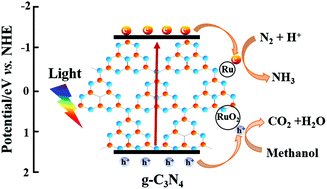
Nanoscale, 2020,12, 12329-12335
https://doi.org/10.1039/D0NR02527E
Cu/M:ZnO (M = Mg, Al, Cu) colloidal nanocatalysts for the solution hydrogenation of carbon dioxide to methanol
Doped-ZnO nanoparticles, capped with dioctylphosphinate ligands, are synthesised by the controlled hydrolysis of a mixture of organometallic precursors.
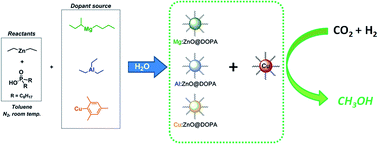
J. Mater. Chem. A, 2020,8, 11282-11291
https://doi.org/10.1039/D0TA00509F
A high-throughput SAMDI-mass spectrometry assay for isocitrate dehydrogenase 1
This paper reports a SAMDI-mass spectrometry assay that can evaluate antagonists of cancer-associated isocitrate dehydrogenase 1 in high throughput.
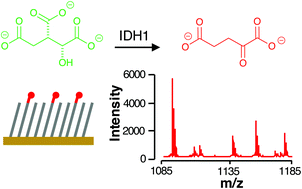
Analyst, 2020,145, 3899-3908
https://doi.org/10.1039/D0AN00174K
Degradation induced lattice anchoring self-passivation in CsPbI3−xBrx
A facile ambient environment solution approach to prepare γ-CsPbI3−xBrx is reported for the first time, leading to samples that exhibit vastly improved stability towards both moisture and heating in air.
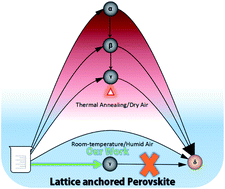
J. Mater. Chem. A, 2020,8, 9963-9969
https://doi.org/10.1039/D0TA02210A
The phosphinoboration of acyl chlorides
This investigation examines the reactivity of phosphinoboronate esters Ph2PBpin (pin = 1,2-O2C2Me4) and Ph2PBcat (cat = 1,2-O2C6H4), as well as other phosphinoboron species, with various aryl and aliphatic acyl chlorides.
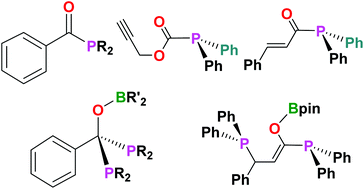
Dalton Trans., 2020,49, 5092-5099
https://doi.org/10.1039/D0DT00579G
Trophic transfer and biomagnification of fullerenol nanoparticles in an aquatic food chain
Understanding the trophic transfer and biomagnification potential of nanomaterials in aquatic food chains is crucial for assessing the environmental risks of such materials.
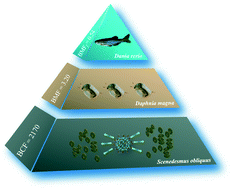
Environ. Sci.: Nano, 2020,7, 1240-1251
https://doi.org/10.1039/C9EN01277J
Calcium cyclic carboxylates as structural models for calcium carbonate scale inhibitors
Calcium complexes of cyclic oligocarboxylic acids have been studied as models to understand how subtle changes in molecular structure lead to significant variation in inhibition ability for calcium carbonate deposition
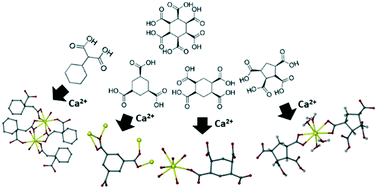
CrystEngComm, 2020,22, 2585-2592
https://doi.org/10.1039/D0CE00243G
Photocatalytic proton reduction by a computationally identified, molecular hydrogen-bonded framework
A hydrogen-bonded organic framework is an effective photocatalyst for producing hydrogen from water. Its crystal structure is key to its activity; a chemically identical, amorphous version is almost inactive, as rationalized by crystal structure prediction.
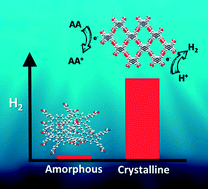
J. Mater. Chem. A, 2020,8, 7158-7170
https://doi.org/10.1039/D0TA00219D
Detection of β-alanyl aminopeptidase as a biomarker for Pseudomonas aeruginosa in the sputum of patients with cystic fibrosis using exogenous volatile organic compound evolution
A novel, rapid and sensitive analytical method has been developed and applied to 105 sputum samples from patients with cystic fibrosis, including 5 samples from post-lung transplant patients.
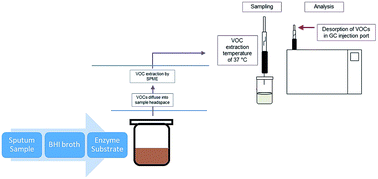
RSC Adv., 2020,10, 10634-10645
https://doi.org/10.1039/C9RA08386C
Insight into the mechanism of CO-release from trypto-CORM using ultra-fast spectroscopy and computational chemistry
Photolysis of trypto-CORM results in ultra-fast CO-dissociation and formation of a 16-e triplet followed by solvation.

Dalton Trans., 2019,48, 16426-16436
https://doi.org/10.1039/C9DT03343B
Polymer-supported metal catalysts for the heterogeneous polymerisation of lactones
Polymer-supported metal catalysts are used for the heterogeneous polymerisation of renewable lactones, towards the efficient and environmentally benign production of sustainable polymers.
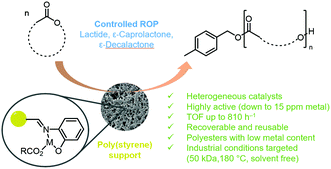
Polym. Chem., 2019,10, 5894-5904
https://doi.org/10.1039/C9PY01472A
A feasibility study of a leaky waveguide aptasensor for thrombin
This proof-of-principle study demonstrates the feasibility of a leaky waveguide (LW) aptasensor, where aptamers were immobilised in a mesoporous chitosan waveguiding film for the detection of thrombin.

Analyst, 2019,144, 6048-6054
https://doi.org/10.1039/C9AN01421G
About this collection
To celebrate our 2021 Royal Society of Chemistry prizewinners, we have highlighted some recently published work from our winning teams and individuals. This collection showcases the wide range of research that our winners have published across the Royal Society of Chemistry’s journals portfolio and will be free to access until 30th September 2021.
Get to know the 2021 Royal Society of Chemistry prizewinners and their research here.
Many of our prizes will open for nominations in Autumn 2021 – read more about the different categories here.